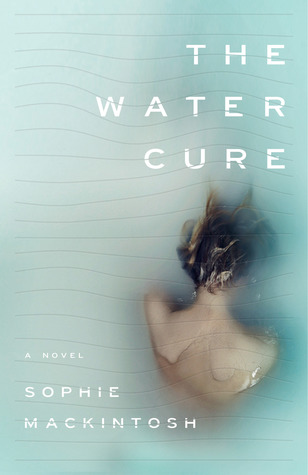“‘This is all getting a bit much, isn’t it?’ says Llew, attempting to be kinder, to defuse the situation. ‘What has got into you?’ A small pause. I understand that he is trying to shame me for my need, but unfortunately for him and for me I am totally shameless in this regard, I will demonstrate my need over and over for anyone who asks. I would take my strange and incapable heart out of my chest if I could, display it, absolve myself of responsibility.” (The Water Cure, 197)

Sophie Mackintosh’s The Water Cure, is one of the most interesting and original novels I’ve read in a long time. There are moments when one craves a simple, painless book to pass the time and others when an intricate and thought-provoking read is necessary. The Water Cure has been the latter for me. I have been experiencing a reading-slump over the past few months, perhaps the longest I’ve ever had, and needed a gripping book to set me right again.
Mackintosh’s story exposes the beginning-of-the-end for three sisters living on an island where women catch disease from men. In a world where they are trained to fear and run from the violence of men, Grace, Lia, and Sky are left to their own devices after their father mysteriously vanishes.
In her novel Mackintosh braids together love, pain, and hope into a tale of feminist survival in a world that is eerily akin to our own.
The writing also pushes the reader to decipher much of the characters’ pasts by puzzling together contextual clues. This transforms every page into a challenge and reward as the reader comes to understands the whole story.
The characters are flawed, but in the most realistic way possible considering their broken world, and are filled with a hidden viciousness as well as extreme love. The girls (Grace, Lia, Sky) hurt each other in their own ways yet retain their love for one another until the end. Grace, the eldest sister, seems to embody icy heartlessness and is constantly described as cold by herself and others, whereas Lia (the middle child) often personifies fiery passion, both in her burning need for physical touch and for self-mutilation. Interestingly, the youngest of the girls never receives her own POV chapter. Lia shares a group POV with the others at the beginning and the end of the book but she is oddly silent throughout The Water Cure. That isn’t to say she never made a sound or spoke-in fact, she screams often in the story-but that Lia comes across less of a full-fledged character than her sisters. I wondered at the author’s reasoning for this (I am sure) intentional omission. I theorize that the three girls represent different kinds of women found in the world: some icy cold, some on fire, and others just passive. Sky is often described as the young baby of the group, innocent of the world, and in need of protection. It is to this end Grace and Lia do much of what they do, including causing pain to their youngest sister, all in the name of love.
Continued thoughts of this novel would likely produce more in-depth analysis of the characters and their world, but since I just finished reading the book these thoughts are very basic and not nearly at the extent that writing of this caliber deserves. I would welcome additional feedback and to hear other reader’s opinions on The Water Cure.
Tiffany
Find me on…
Youtube: The Page Turner
Goodreads: https://www.goodreads.com/cup0tea
Instagram: @thepgturner